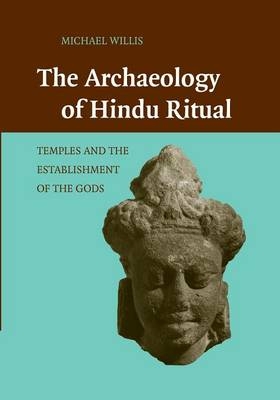
The Archaeology of Hindu Ritual
Temples and the Establishment of the Gods
Seiten
2014
Cambridge University Press (Verlag)
978-1-107-46016-4 (ISBN)
Cambridge University Press (Verlag)
978-1-107-46016-4 (ISBN)
Willis examines how the gods of early Hinduism came to be established in temples, how their cults were organized, and how the ruling elite supported their worship. Examining the emergence of these key historical developments, Willis combines Sanskrit textual evidence with archaeological data from inscriptions, sculptures, temples, and sacred sites.
In this groundbreaking study, Michael Willis examines how the gods of early Hinduism came to be established in temples, how their cults were organized, and how the ruling elite supported their worship. Examining the emergence of these key historical developments in the fourth and fifth centuries, Willis combines Sanskrit textual evidence with archaeological data from inscriptions, sculptures, temples, and sacred sites. The centrepiece of this study is Udayagiri in central India, the only surviving imperial site of the Gupta dynasty. Through a judicious use of landscape archaeology and archaeo-astronomy, Willis reconstructs how Udayagiri was connected to the Festival of the Rainy Season and the Royal Consecration. Through his meticulous study of the site, its sculptures and its inscriptions, Willis shows how the Guptas presented themselves as universal sovereigns and how they advanced new systems of religious patronage that shaped the world of medieval India.
In this groundbreaking study, Michael Willis examines how the gods of early Hinduism came to be established in temples, how their cults were organized, and how the ruling elite supported their worship. Examining the emergence of these key historical developments in the fourth and fifth centuries, Willis combines Sanskrit textual evidence with archaeological data from inscriptions, sculptures, temples, and sacred sites. The centrepiece of this study is Udayagiri in central India, the only surviving imperial site of the Gupta dynasty. Through a judicious use of landscape archaeology and archaeo-astronomy, Willis reconstructs how Udayagiri was connected to the Festival of the Rainy Season and the Royal Consecration. Through his meticulous study of the site, its sculptures and its inscriptions, Willis shows how the Guptas presented themselves as universal sovereigns and how they advanced new systems of religious patronage that shaped the world of medieval India.
Michael Willis is curator of the early South Asian and Himalayan collections at the British Museum. A Fellow of the Royal Asiatic Society and an Honorary Research Fellow at Cardiff University, he is the author of The Temples of Gopaksetra and Buddhist Reliquaries from Ancient India.
1. The archaeology and politics of time at Udayagiri; 2. The establishment of the gods; 3. Ritual action and ritual actors.
| Zusatzinfo | 4 Maps; 28 Halftones, unspecified; 15 Line drawings, unspecified |
|---|---|
| Verlagsort | Cambridge |
| Sprache | englisch |
| Maße | 178 x 255 mm |
| Gewicht | 740 g |
| Themenwelt | Geisteswissenschaften ► Archäologie |
| Geisteswissenschaften ► Religion / Theologie ► Hinduismus | |
| ISBN-10 | 1-107-46016-6 / 1107460166 |
| ISBN-13 | 978-1-107-46016-4 / 9781107460164 |
| Zustand | Neuware |
| Haben Sie eine Frage zum Produkt? |
Mehr entdecken
aus dem Bereich
aus dem Bereich
Worshipping the Eternal Mother at a North American Hindu Temple
Buch | Hardcover (2024)
Oxford University Press Inc (Verlag)
CHF 136,00


